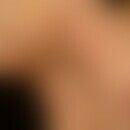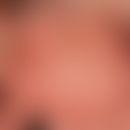Synonym(s)
HistoryThis section has been translated automatically.
DefinitionThis section has been translated automatically.
Autosomal-dominantly inherited congenital hypotrichosis without associated symptoms with typical hair anomalies, which usually manifests itself only in preschool or early school age.
You might also be interested in
EtiopathogenesisThis section has been translated automatically.
Autosomal-dominantly inherited mutations (so far > 17 mutations have been detected in different ethnic groups) of the "Marie Unna Hereditary Hypertrichosis" gene (MUHH gene, also U2HR gene - especially in Chinese populations), located in a region of the so-called hairless gene , chromosome: 8p21). It is believed that U2HR serves as a negative regulator of the HR gene and mutations cause a gain-of-function, which leads to an increased translation of the HR gene.
ClinicThis section has been translated automatically.
Hair missing from birth, short eyelashes, rarefied eyebrows; late, slow growth of bristly, dystrophic, difficult to comb hairs (wide hair spacing). Sparsely applied secondary hair. From the age of 10 to 25 years, increased effluvium of the scalp hairs, which leads to alopecia of the androgenetic type (see Alopecia androgenetica in women, Alopecia androgenetica in men) of varying severity (up to total alopecia). Sparsely developed secondary hair. This can also be completely absent. Between the ages of 10 and 25, hair loss begins again, sometimes up to total alopecia, including loss of eyelashes and eyebrows.
HistologyThis section has been translated automatically.
- Pili torti (rotation of the hair shafts by 90 or 180 ° around their longitudinal axis at intervals of 2-10 mm), flattening the hair.
- Scanning electron microscope: cuticle defects, longitudinal grooving of the hair shafts resulting in a triangular or kidney-shaped cross-section ( Pili canaliculi).
TherapyThis section has been translated automatically.
Possibly hair transplant, s.a. Pili torti. No other therapy is known.
LiteratureThis section has been translated automatically.
- Chlebarov S (1985) Hypotrichosis congenita hereditaria Marie Unna. Z Hautkr 60: 583-596
- Cichon S et al (2000) A distinct gene close to the hairless locus on chromosome 8p underlies hereditary Marie Unna type hypotrichosis in a German family. Br J Dermatol 143: 811-814
- Green J et al (2003) Progressive patterned scalp hypotrichosis, with wiry hair, onycholysis, and intermittently associated cleft lip and palate: clinical and genetic distinction from Marie Unna. J Investig Dermatol Symp Proc 8: 121-125
- Unna M (1925) About hypotrichosis congenita hereditaria. Dermatol Weekly 81: 1167-1178
- Wong SN et al (2002) Marie Unna hypotrichosis in a Chinese family. Pediatric Dermatol 19: 250-255
- Zhong Z et al (2015) Identification of mutations in U2HR in two Chinese families with Marie Unna hereditary hypotrichosis. Clin Exp Dermatol 41:175-178
Incoming links (8)
Axillary congenital alopecia; Eye diseases, skin changes; Hypotrichosis; Hypotrichosis total familial; Marie-unna syndrome; Unna's hypotrichosis; Unna syndrome; Unnose congenital hypotrichosis;Outgoing links (8)
Alopecia androgenetica in men; Alopecia androgenetica in women; Alopecia (overview); Hairless gene; Hair transplantation; Hypotrichosis; Pili torti; Uncombable Hair Syndrome;Disclaimer
Please ask your physician for a reliable diagnosis. This website is only meant as a reference.




